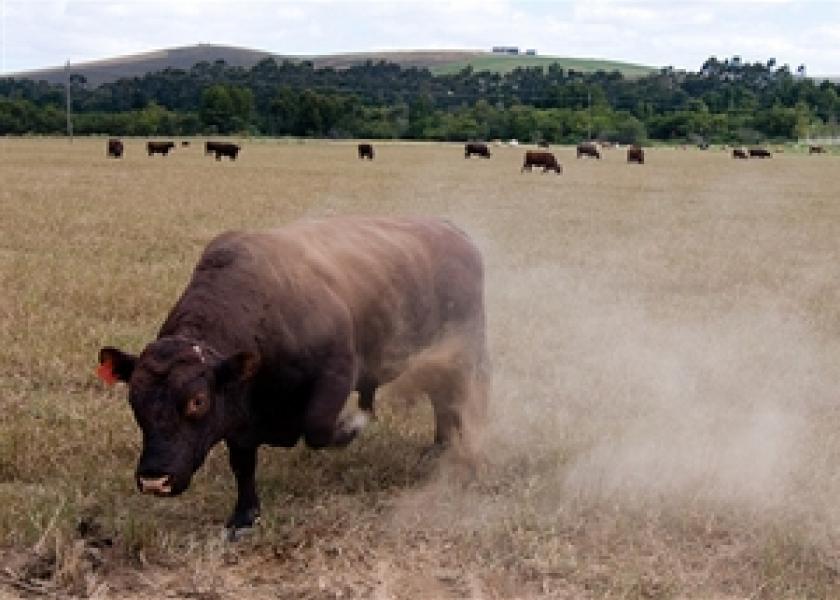Calves That Create Fervid Gusto Are Good

By: Kris Ringwall, Beef Specialist, NDSU Extension Service
Buying bulls means buying a good bull with structure, fertility and the desired traits that correspond to a market driven to buy the offspring with fervid gusto. Most livestock buyers purchase with gusto, but the right genetics will add fervor. With fervor comes more money and value.
How does this happen? Buy bulls based on their proven genetic value using expected progeny differences (EPD) information provided by the breed association of interest. It’s true that it works, so what else can one say? The genetic trends are real and so are the EPD values.
Highly proven bulls can be purchased through looking at the lineup of sires available from companies that specialize in offering bulls for artificial insemination. Also, numerous young nonparent bulls are available from fellow ranchers throughout the bull-buying season with published EPDs for numerous traits.
One simple message to bull buyers is to use the available EPDs to strengthen the genetic accuracy of selection. In other words, spend good money and spend it where the genes are so you can take home the right genes. With relative ease, we can determine the average values for selected traits in young bulls.
For example, if one opens the website for nonparent Red Angus bulls, we will find certain EPD values. In this case, the values are birth weight (BW) minus 1.2, weaning weight (WW) 54, yearling weight (YW) 84, marbling (MARB) 0.39 and rib eye area (REA) 0.12.
On the other hand, one could open a similar website for nonparent Angus bulls and find different values. On this website, the values are BW 1.8, WW 47, YW 83, MARB 0.46 and REA 0.42.
One also could open Simmental, Hereford, Gelbvieh or many other association websites that publish breed performance and selection tools that enhance a producer’s ability to select the appropriate genetics. With these different websites, producers can get a feel for the numbers that represent the breed they choose to produce.
As the traits expand, sometimes the verbiage gets excessive, so various states of confusion set in. Whatever the trait, always remember that the basic EPD concept does not change. Similar to molding clay, a producer slowly massages the work in progress until the end product is achieved.
As measured by EPDs, adding some DNA for this or some DNA for that is what brings success. For discussion purposes, we started with Red Angus bulls, but understanding EPDs is pertinent to all breed associations that publish the different values. Each year, new information is added to a breed association’s database. The data may come in the form of simple handwritten sheets for birth weights, calving dates or any other traits. On a higher level, a producer may use one of the many electronic opportunities that are available to submit data. The data entered could be as sophisticated as using blood or tissue analysis results from a laboratory to obtain DNA information.
With time, all data points help paint a picture of what genetics actually reside in each member of the herd. Interestingly, all data is important, so new data does not replace the old. As time moved on, better attention to data collection and transfer and the organizing of the growing data base has improved the accuracy of selection and the confidence producers have in the data.
Newer technology, expanded analyses of DNA samples and a more intense data analysis haave built more confidence in what the data are telling us. Again, all this leads us to using EPDs. Some would say this is old news. Unfortunately, EPD usage across the industry is far from saturated. How does one know? Just listen to a few conversations by those selling or buying bulls.
Three things can help beef producers during the bull-buying season. First, look up and know the average EPD value for the traits of interest for the breed. Second, look up and know the average EPD value for the traits of interest of the bulls that have been purchased previously. Then compare the two sets of numbers. The comparison will indicate if the traits of interest within the breed one is working with are average, above average or below average for the breed.
Now ask yourself if the offspring of the bulls are selling with gusto or fervid gusto. If only with gusto, then more can be done to purchase better sires, so get to work and start the third step. The third step involves identifying sires with EPDs for the traits of interest that are ahead of the breed average and of the old bulls.
Also, remember to buy stronger EPDs with fervid gusto.
May you find all your ear tags.







